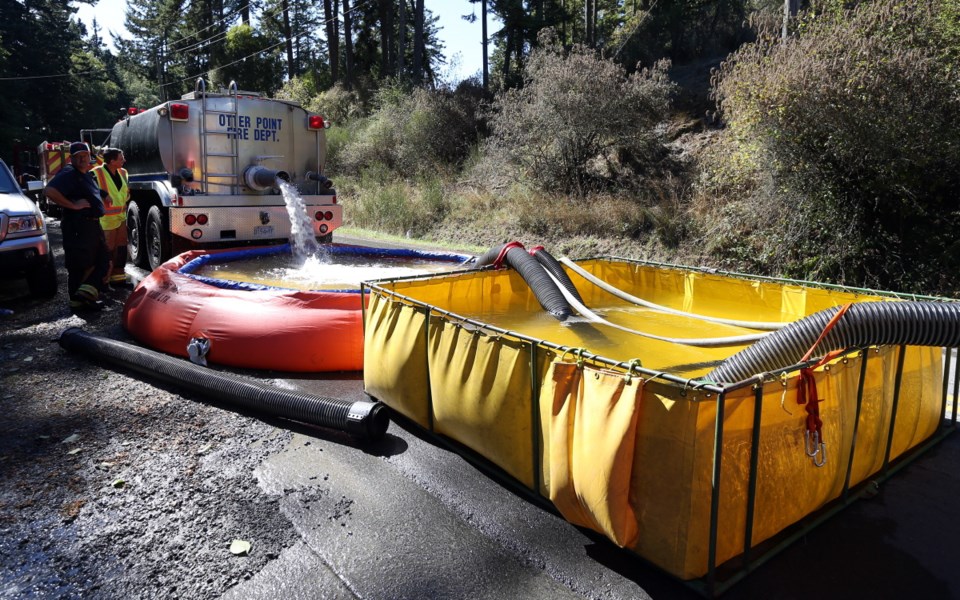When Sooke firefighters tried to reach a man whose heart stopped beating on Wednesday morning, they were frustrated when they couldn’t find his house number.
Seconds turned into minutes as they searched for the property along Sooke Road, in what is an all-too-common scenario, said Fire Chief Steve Sorensen. When house numbers are not displayed prominently, it can mean the difference between a rescue and a tragedy.
In this case, Sorensen said, the man had died, “so it didn’t actually make a difference.”
House numbers are often weathered, faded, missing, covered by vegetation or not visible at night. “I would say for us that 25 to 30 per cent of the calls, we struggle to find an address,” Sorensen said.
“Quite often, they’re not bad in the daytime. But at night, if it’s a dark sign stuck on a rock or a wooden post with branches or trees all around it, you just can’t find it. Especially if it’s raining.”
In rural areas, where houses are farther apart, it might be half a kilometre before you can find a place to turn around, he said.
Metchosin Fire Chief Stephanie Dunlop said there are driveways in her region that stretch two to three kilometres. Often, they splinter into smaller driveways, with house numbers located only at the end.
Any delay can make a difference, she said. “Fires, in the right conditions, can double in size every 30 seconds to a minute.”
For every minute that cardiopulmonary resuscitation is delayed in a cardiac arrest, chances of survival decrease by about 10 per cent, said Grant Brilz, superintendent of B.C. Emergency Health Services. “Certainly there are situations where minutes count or seconds count,” Brilz said.
Sorensen recalled assisting Metchosin firefighters on a call. They weren’t familiar with the area, but could see the house in flames from the main road. Unfortunately, because house numbers were not posted at driveway entries, firefighters wasted time driving up the wrong ones before reaching the house.
Dunlop remembered an incident in which a caller had to give directions that included “turn at the broken-down trailer.”
“You know where to look for it, but we might not,” she said. “That delay in looking for an address can cost a life.”
Otter Point Fire Capt. John McCrea said making a sign visible from both directions is important. Some rural homeowners point their sign in one direction, assuming everyone will arrive from Sooke.
That may be true for an ambulance, but the fire truck will be coming from the opposite direction. About 50 per cent of emergency calls at night involve poorly displayed addresses, McCrea said.
It’s less of a problem in urban areas. “It does happen periodically ... but I wouldn’t call it a major problem,” said Lt. Insp. Sean Lillis of the Saanich fire prevention division. The most common problem related to visibility in urban areas are house numbers designed to blend in with the home, usually for esthetic appeal. “We need them to be in contrasting colours like black on white,” Lillis said.
• Sooke Fire Rescue is selling reflective house number signs for $25 as a fundraiser. They come in red, blue, green and black and are available to anyone, not just Sooke residents. Call the non-emergency number at 250-642-5422.



